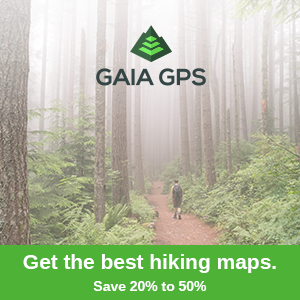I love when people ask these questions because it cracks the door for all kinds of great talking points that are near and dear to my heart. We all want our loved ones to come home from a hike safe and sound, and we certainly want to do our own due diligence to stay as safe as possible on our own hikes. So with that in mind, here are some gift ideas for hikers that will keep them safer in the backcountry and chances are they’ll love them versus regift them one day!
Epiphany Baddest Bee Fuses and Pocket Bellows
This fun set of pocket bellows and fire fuses made with bee’s wax makes the task of fire starting easier and more fun! The pocket bellows may be purchased by itself for a few dollars less than the set, but for well under $20, the two together make for a great gift idea.
The bellows collapses down on itself (as pictured in it case above), but when it’s fully extended, it funnels a strong, concentrated blast of air towards a fire, by blowing into the end with the larger diameter. It works amazingly well for very little weight penalty. I love mine and it has helped me get many a fire started in less than ideal conditions.
The fuses work best when teased apart to expose as much surface area as possible. A fellow SAR member in our region constantly preaches in the backcountry skills courses he teaches , “Always cheat, always win.” For fire starting, using things like this bellows and fire starting aids fall in line with this mindset. If you’re in a true survival situation and need to get a fire started ASAP, it’s not the time to make things harder on yourself. These items would help tremendously with that effort.
Biolite Rechargeable Headlamp 330
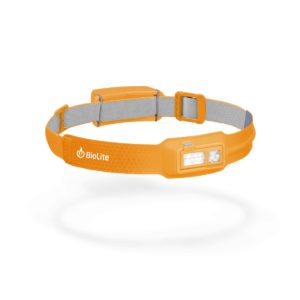
Newer on the scene but being met with rave reviews is the Biolite Headlamp 330. Coming in at 2.43 ounces with a max lumen output of 330, along with moisture wicking fabric on the headband, red light feature, and the 9 mm front profile, it’s a gem. I especially love that its rechargeable, since I always carry an external battery charger in my pack.
If you want to really “wow” someone with a light source, rather than just give them a run-of-the-mill headlamp, this would be a fun (and very useful) one.
And for what its worth, I can think of at least a dozen SAR operations I’ve been on where a headlamp could have kept people from needing to call our team for help. Always carry a light source and preferably a backup, or at least a backup power source like extra batteries or external battery charger, which brings me to my next item….
External Battery Charger
It’s hard to convince me that folks shouldn’t carry an external battery charger in their backpacks at all time, whether it’s a day hike or a multi-day backpacking trip. With most of us relying on technology for navigation, photos, etc. on our hikes, it’s not only practical but also safe to keep some extra “juice” on hand for your phone, GPS device, etc.
This model from Anker is the one I recommend to most folks, unless they need something more powerful for a multi-day trip. The good news is that this is a very utilitarian item beyond hiking. I take mine when I travel, especially by plane.
Finally, here’s something I wrote about external battery chargers and what features to look for with one, if you need a little more assistance before purchasing one.
Appalachian Gear Company Alpaca Clothing

Me with my App. Gear Co. hoodie (best blue color ever!) and gaiter. They also make beanies, and I love it as well).
I have long extolled the virtues of merino wool clothing and how much I benefit from my own collection on hikes. It’s hard to beat clothing that has the ability to keep you warmer than cotton, even when wet, especially when it doesn’t retain odors like synthetic fabrics will, along with being highly breathable.
Alpaca fibers have the same benefits as merino wool, but with the added bonus of retaining less water (11% versus merino wool’s 30%’ percent). Coupled with the fact that alpaca requires less chemical processing than merino wool to make clothing, it’s also more natural and environmentally friendly. It’s also touted as being less itchy than merino wool clothing. I honestly think that’s up for debate, because if you’re sensitive to merino wool, my guess is that you’ll probably be sensitive to alpaca (but that’s just my hunch and isn’t rooted in any facts at all).
I quickly fell in love with Appalachian Gear Company’s products for all these reasons, and it doesn’t hurt that the products they make are super fashionable to wear, both on and off the trail. They’d make for a great gift, providing a hiker friend something they’ll treasure for years, while keeping them in a solid fabric choice for the backcountry.
CNOC Vecto Bags
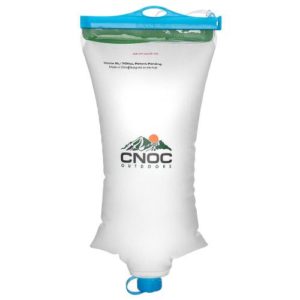
If you use something like a Sawyer Squeeze to filter your water, you have likely had the problem of the Sawyer bags failing on you while using one. If you haven’t had this happen to you yet, it’s just a matter of time before it does, if history and experience of thousands of other hikers dictates anything!
In my opinion, filtering water is a non-negotiable in the backcountry, and most folks want a reliable and easy setup. The CNOC Vecto bags are a great option to replace the Sawyer bags that come with their filters. You can also use CNOC bags with other similar hollow membrane fiber filters with a 28 mm thread such as the Sawyer Squeeze or Mini, the LifeStraw Flex, and the HydroBlu Versa Flow.
One of the most unique and useful features with the CNOC Vecto bags are the wide mouth opening, which makes water collection from slow moving sources easier. You can also use two CNOC Vecto bags to create an inline water filter system with one of the aforementioned filters. CNOC makes it especially easy to purchase this entire setup on their website.
Or just do like I do and only use one bag connected to a Sawyer Micro Filter, with the other end connected to a Smart Water Bottle. I personally think a fun gift idea for a day hiker would be to give someone a water filter, a CNOC Vecto Bag and a Smart Water Bottle. 🙂
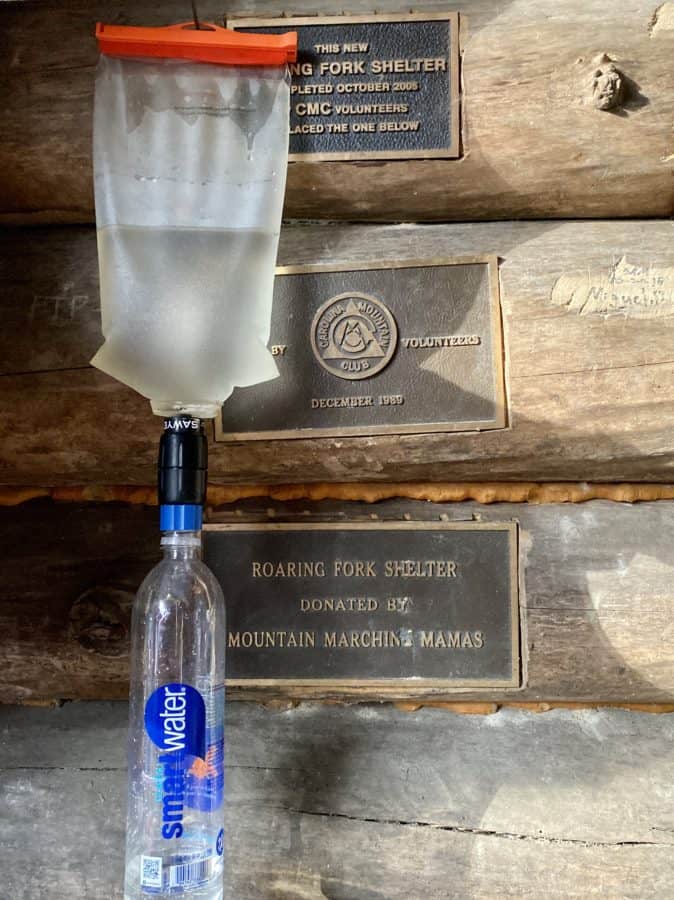
One thing to mention about these bags is that they will sometimes spring a leak at the seam near the screw top closure. That happened to my own bag and it wasn’t in warranty anymore. I contacted CNOC and they gave me the great tip to apply a small amount of super glue over the leak, and it’s kept it sealed for months now. I always carry superglue in my repair kit anyway, but this is just one more reason to do so.
Garmin InReach
My personal favorite satellite device and one that is clipped to my backpack on every hike I take: Garmin InReach Mini.
Here’s something I wrote about why I think this device is a very worthy addition to your backpack. While it’s not one of the “10 Essentials,” if you can afford to carry a device that sends an SOS signal to emergency services, should you become lost or injured to the point of immobility, it could literally save your life. Worth its weight in gold in my opinion.
This is not an inexpensive gift though, and you’d want to somehow make sure the recipient is willing to pay for the subscription fee that comes along with it. If you’re not sure about that aspect, an excellent alternative to the InReach is the ACR ResQLink. It does not have messaging capabilities, but it also doesn’t require a subscription fee and is good to go right out of the box. It also supposedly sends a stronger signal than the InReach, which could be very beneficial in areas with dense tree canopy or limited visibility to the sky.
Kahtoola Microspikes
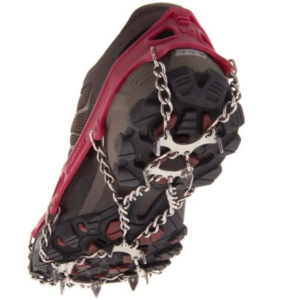
Kahtoola Microspikes are always in my pack during a winter hike, just in case I come across or get caught in unexpected wintry terrain. They’re also great when you’re shoveling snow on an icy driveway!
Of note, there are a lot of off-brand microspikes like this on Amazon. I bought four sets of them for my family members to use on the Tour du Mont Blanc, should we come across any snow or ice. We didn’t have to use them much, so my opinion is limited about their durability long term, but they did just fine for our needs. They are usually at least half the price of Kahtoola’s, so if you rarely need something like these, I would personally save your hard-earned cash and just buy those instead of the pricey Kahtoola’s.
If you have a hiking friend who hikes in areas where they may encounter snow and/or ice and they don’t have a set of spikes yet, I think this is a great gift idea!
Gaia GPS Subscription
I can’t say enough good things about Gaia GPS and how much I benefit it from it on my hikes and while I plan them. While I would never recommend only relying on technology to guide you in the backcountry, I do recommend every person with a smart phone have a navigational app loaded onto it. While map and compass skills are a necessity, in a situation where time is not on your side to use them to aid you in working your way out of a bind, an app like Gaia could literally save your life (or at a minimum, keep you from needing a SAR team to find you).
There are plenty of apps on the market to choose from, and I’ve tried a lot of them (free and paid). Once I bought a Gaia subscription, the rest were deleted from my phone and I’ve never looked back.
The best part about Gaia is that I’m able to offer folks a 20-50% discount on a subscription, depending on how long you purchase the subscription for and which level (I use the Premium version and it’s worth every penny). It’s super affordable any way you do it, and I personally think think it’s a fabulous gift idea.
If you’d like to learn more about the functionality of Gaia and how I use it in my own life, here’s a video I did in my Facebook Group awhile back on the topic.
Of course, a map and compass would also make a great gift idea, but I’d personally recommend pairing them with my favorite book on navigation. It was a game changer for me to finally understand (and not just memorize) navigation and orienteering. I like the Kindle version, since it’s loaded onto my phone at all times, should I need to reference it in the backcountry.
CRKT Neck Knife
A knife is another non-negotiable item in my backpack. Whether it’s used for whittling down wet branches to get to their dry core to make a fire or feeling more secure from a safety standpoint (amongst plenty of other uses in between), it’s another great gift idea for a hiking friend.
There are plenty of reputable knife manufacturers (and also plenty of crap, so make sure you do your homework before purchasing one). This neck knife from CRKT is what I carry and use, and I like that it’s lightweight and at the ready if I need it.
Liteflex Umbrella
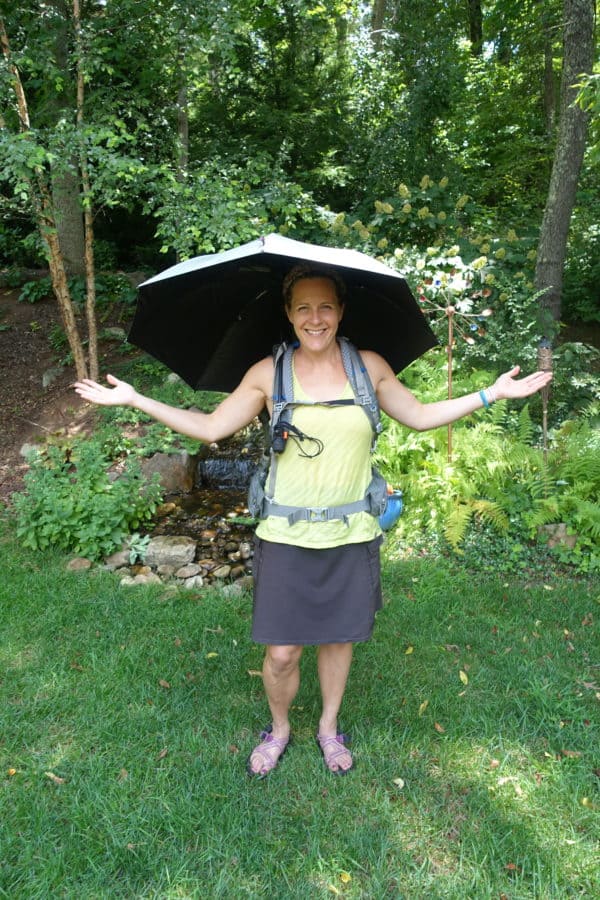
You can even rig an umbrella to hike hands free with it in the rain!
Last but certainly not least, one of my personal favorite pieces of gear: My Liteflex Umbrella! From a sanity-saving standpoint in rain, it’s a no brainer for me. But from a safety standpoint, it gets very high marks as well. Hiking in exposed, sunny conditions? Instant shade and heat reflection. Hiking in rain? Protection without the risk of wetting out or sweating out in a rain jacket! I even rig mine to use hands free which you can read about here (and also read my full review).
I wouldn’t hesitate to give an umbrella as a gift for a hiker. You can certainly buy a less expensive one, but for the weight savings and reflective canopy, this one gets my top pick and I think it’s worth the splurge, especially as a gift.
Conclusion
In conclusion, this is a small list of dozens of items I could recommend for fun gifts with a safety focus. I’m happy to help you find just the right thing for a hiking friend, and I’d also love to know what you might add to this list. Feel free to chime in with a comment and happy trails!
P.S. Want to find out about hiking and camping gear deals the quickest way? I invite you to join my Facebook group, Hiking and Camping Deals, where I post the best deals and sales in the industry as as soon as I find them. We are a lively group of outdoor enthusiasts, willing to help newbies with gear choices and feed the addiction of seasoned pros. You can also subscribe to my daily deals digest via email below!




